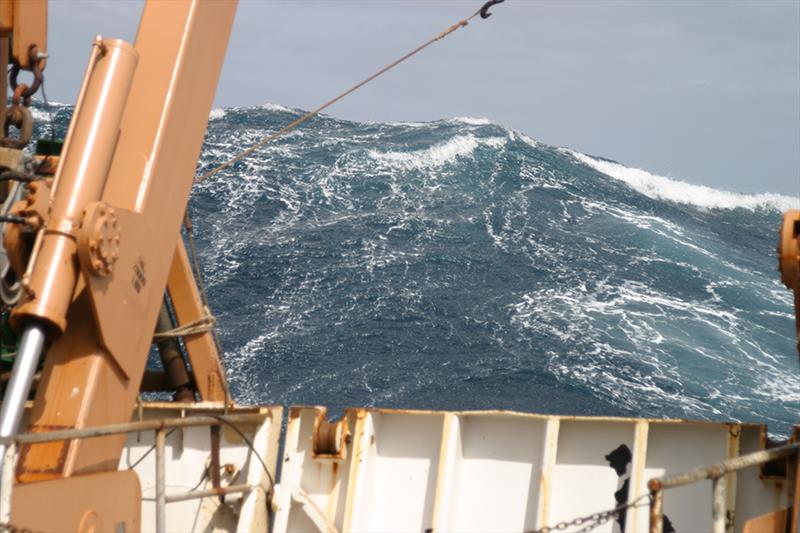
What causes seasickness?
by NOAA 29 Oct 2018 05:45 PDT

A large wave towering astern of the NOAA Ship Delaware II in 2005 while crossing the Atlantic Ocean's New England Seamount Chain © NOAA
Seasickness results from a conflict in the inner ear and the erratic motion of a vessel.
One of the least pleasant aspects of going to sea is the possibility of getting seasick. An individual's susceptibility to seasickness is highly variable. If you've ever had motion sickness when traveling by car, plane, or amusement park ride, you may be more susceptible to seasickness while aboard a vessel.
Seasickness is a result of a conflict in the inner ear, where the human balance mechanism resides, and is caused by a vessel's erratic motion on the water. Inside the cabin of a rocking boat, for example, the inner ear detects changes in both up-and-down and side-to-side acceleration as one's body bobs along with the boat. But, since the cabin moves with the passenger, one's eyes register a relatively stable scene. Agitated by this perceptual incongruity, the brain responds with a cascade of stress-related hormones that can ultimately lead to nausea, vomiting, and vertigo.
Additionally, an affected person's symptoms can be magnified by the strong odors of things like diesel fumes and fish. Seasickness usually occurs in the first 12 to 24 hours after "setting sail," and dissipates once the body acclimates to the ship's motion. It's rare for anyone to get or stay ill beyond the first couple of days at sea—unless the vessel encounters really rough waves.
If you do get seasick, take comfort in the fact that recovery is only a matter of time, and the survival rate is 100 percent! Sensible eating, good hydration, and some patience are all that are usually required to get past a bout of seasickness.
Here are a few tips to help ease the symptoms of seasickness:
- Maintain your fluid intake. Seasickness and related medications cause dehydration and headaches. Drink water, low-acidity juices like apple and carrot, or clear soup, and avoid milk and coffee.
- Keep moving. Most people find that being busy keeps their minds off their discomfort.
- Stay on deck, even if it's raining, because the fresh air is often enough to speed recovery. The closed-in quarters below deck magnify the vessel's motion and worsen symptoms.
- Carry a plastic bag. This simple approach allows for peace of mind by eliminating some of the panic of getting seasick. If you have to vomit "over the side," though, check the direction of the wind and waves. Staying leeward (the side of the ship that's sheltered from the wind) will ensure that an unpleasant experience doesn't get even worse.
- Consider an over-the-counter medication to prevent or minimize motion sickness. A dose is usually recommended about an hour prior to setting sail, and as needed at sea. These medications tend to be dehydrating, though, so drink plenty of water.
And don't be embarrassed for getting seasick. Many people do - including seasoned travelers, professional fishers, sailors, and marine scientists.